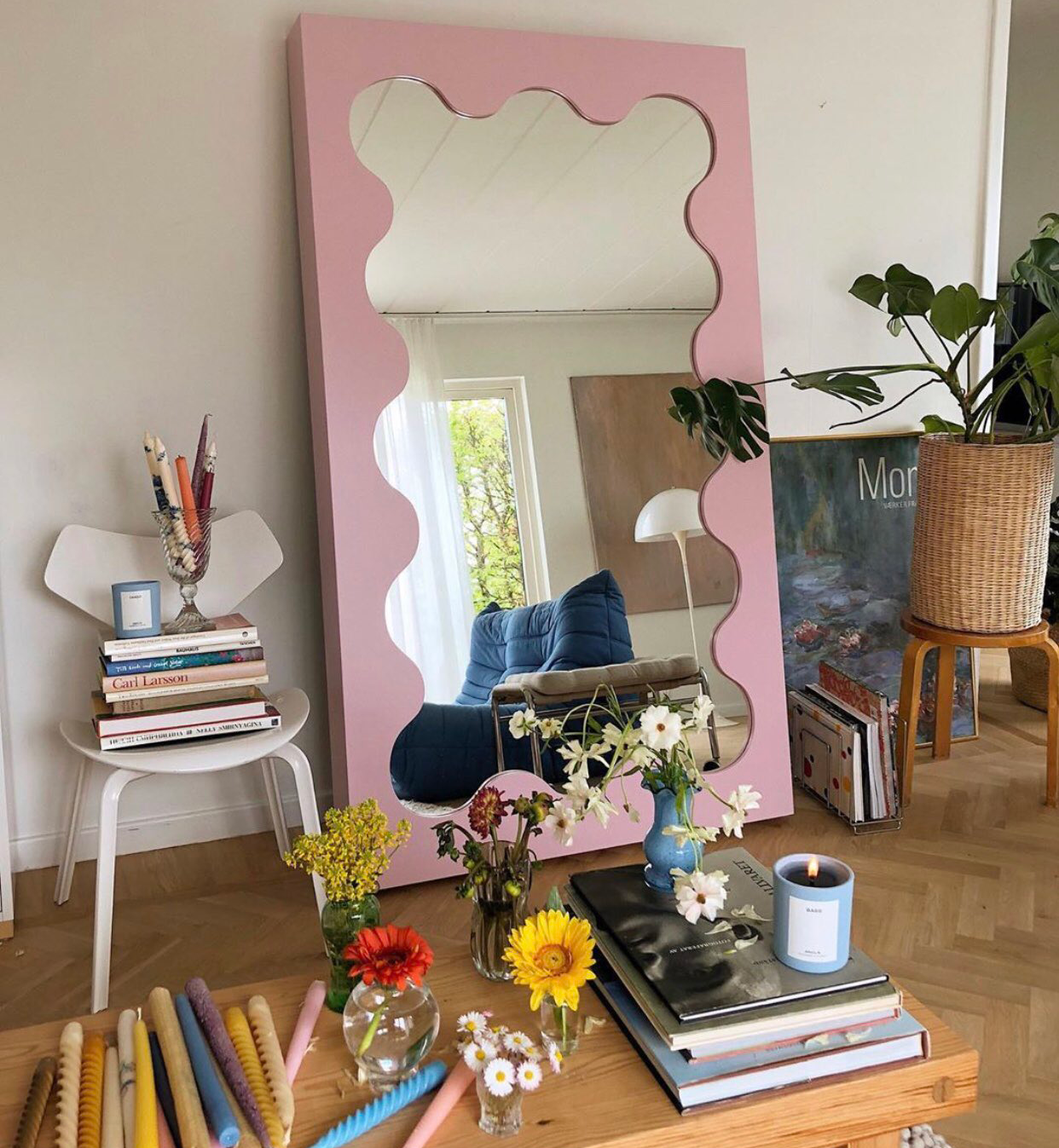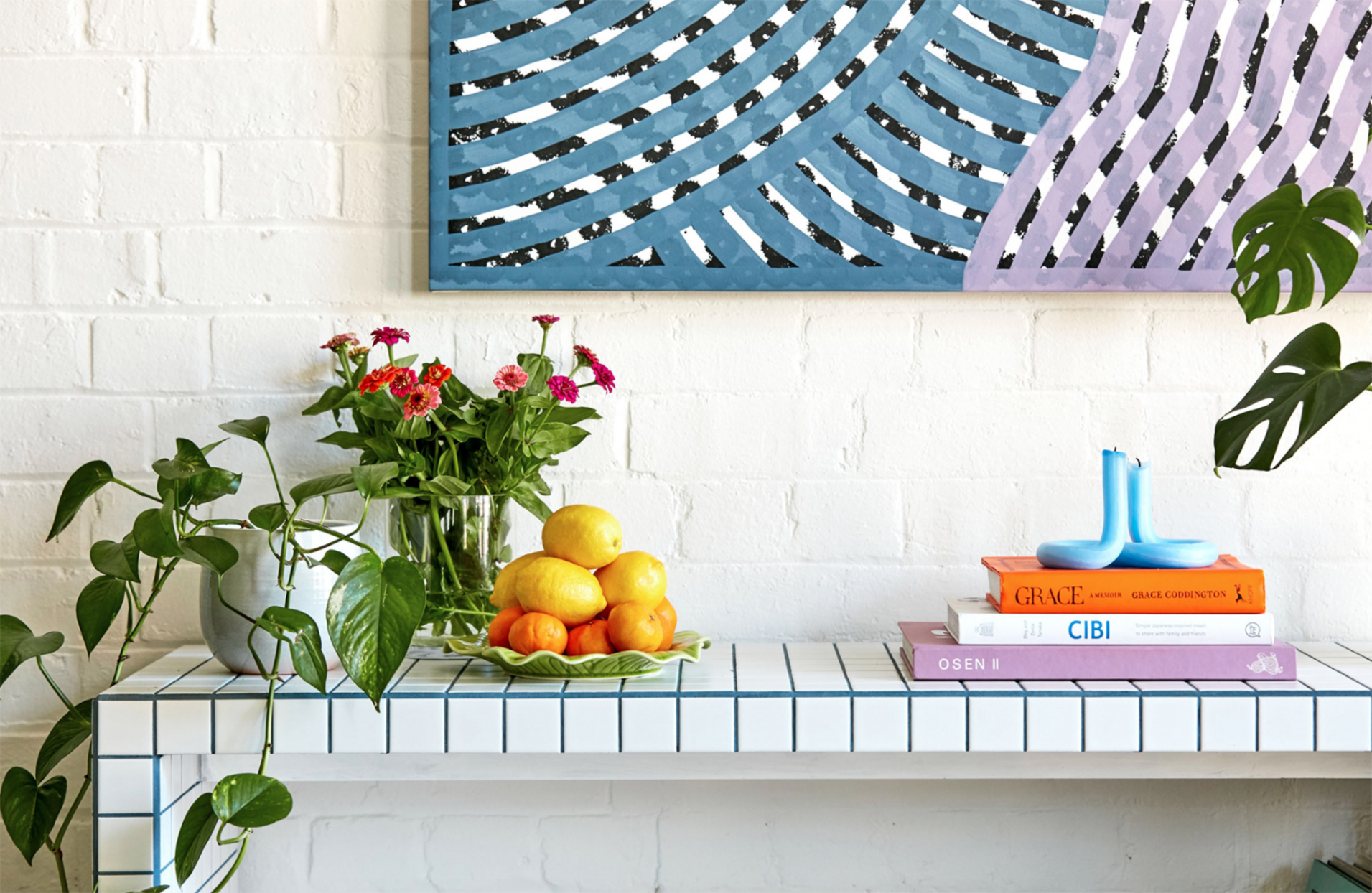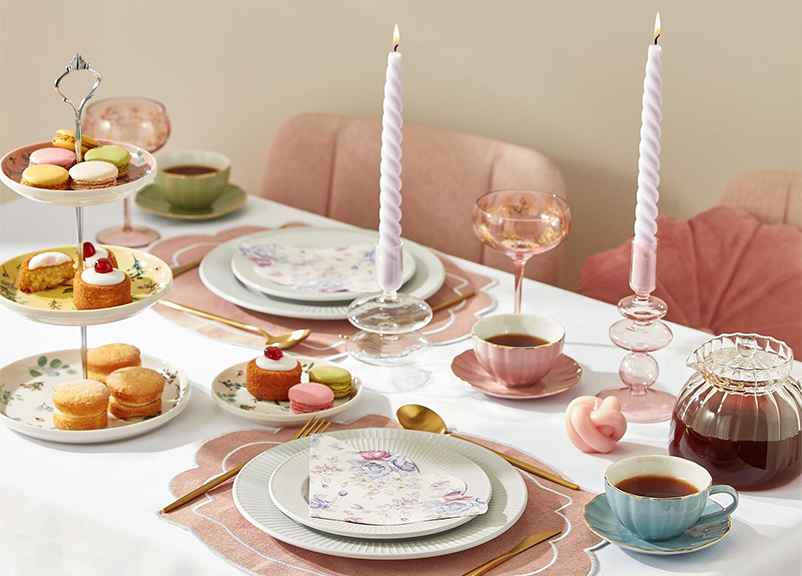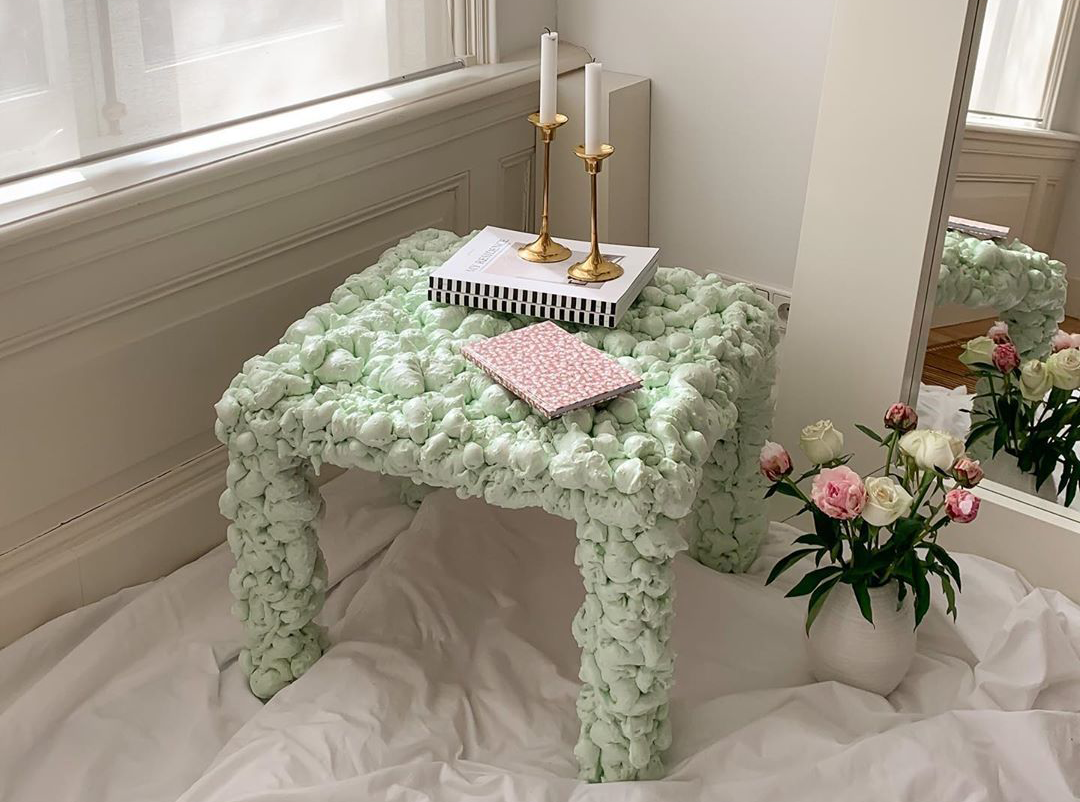“customers are now approaching the homeware category in the same way they buy their clothes”: The Rise Of Fast Homeware

Just as fast fashion promoted and normalised posting a new outfit everyday and over consuming clothing to keep up with short-lived trends, fast homeware is now normalising the constant tweaking and redesigning of our living spaces.
Unsurprisingly, we all feel a heightened sense of ‘nesting’ post-pandemic. Over 37% of participants in a Bernardo’s survey agreed that the look and feel of their home became a top priority in lockdown. Coming out of the pandemic, home decor remained vastly important to many. People shopped so much for cheap, trend-led homeware that homeware sales gained a 42% rise, giving the sector a serious boost.
But the pandemic isn’t the only thing driving fast homeware. Instagram, TikTok, and Pinterest’s visual focused platforms have brought interior design to the forefront of minds and essentially made people a lot more design conscious. We’re bombarded with beautiful images of people’s homes all over social media. Whether we feel envy or inspiration, these jealousy-inducing snaps entice us to keep up with fleeting crazes and splurge on items we really don’t need and definitely don’t have space for.

Fast fashion retailers spotted an opportunity amidst the homeware craze. They utilised their knowledge of flogging cheap clothing to the masses and turned their attention to cheap homeware. Ultra-fast online retailers like Boohoo, Pretty Little Thing, and Missguided all launched homeware lines within six months of each other between 2020 and 2021. Shein and Primark upped their focus on home decor trends. John Lewis, known for dominating the pricier end of the homeware market, launched its ANYDAY range in 2021, where prices are significantly lower than the department store’s usual products. Zara and H&M joined in the game, offering a wide selection of trendy home pieces for their shoppers.
While a vast range of retailers have been buying into the homeware trend, the items we’re seeing are all, well, the same. Dubbed ‘algorithm fashion’, fast homeware offers mass-produced quirkiness, vintage without the effort, machine-made products masquerading as beloved handmade pieces – it’s soulless.
You’ve seen the style; wavey candles, pastel vases, checkerboard rugs, tiled side tables, gold cutlery, and brass candlestick holders for the wavey candles. Fast fashion homeware loves checkered textiles, quirky shaped mirrors, misshapen ceramics, mushroom lamps, and stuff covered in expanding foam. What is the appeal to these items but the fact you’ve seen them online and can buy them cheaply and conveniently from brands you’ve spent years buying clothes from?

The target consumer for fast homeware is young, trend-led renters who want low to mid-price points and easily identifiable trendy pieces. By its nature, renting is unstable and lacks permanence. Despite this, and perhaps even because of it, the impulse to make your living space feel like home doesn’t disappear just because you don’t own that space. This makes this audience prime for consuming cheap and affordable homeware, which plays to current trends rather than longevity. If you don’t know where you’ll be living next year, you probably don’t want to invest in forever pieces. Why buy something that might not fit into your next home or that you might not be able to get to your next home.
These facts have helped launch and expand brand homeware offshoots, which have placed themselves firmly in the broad niche of affordable decor. While it may seem like a bargain, all of this comes at a price. We saw cheap and cheerful homeware boom in popularity once before in 2018, and even then, the issues surrounding the topic were obvious. Reporting on the opening of the first Anthropologie in Germany, writer Fredericke Winkler documented that “customers are now approaching the homeware category in the same way they buy their clothes: trend-oriented, impulsive and seasonal.”
And that’s the elephant in the room; there’s too much stuff and not enough space. The average UK home is 729 square feet, while the average London flat offers only around half that space. The endless churn of trend after trend alongside this lack of space is causing a lot of waste. Nearly 22 million small homeware items are thrown away each year in the UK when they become damaged. This damage is easily caused when the item costs less than a tenner. But it’s not just damaged items ending up in landfills. Due to keeping up with trends or falling out of love with items once they are no longer dubbed ‘fashionable’, 30 percent of people have thrown away furniture, electrical items, and home decor that could have been re-used, sold, or donated.
While we may jump to call this ignorance or laziness, anyone who has attempted to recycle unwanted homeware will know it’s not a simple process. The mix of materials and chemicals used to make cheap furniture and decor means a lot of recycling facilities cannot process many items, making the bin pretty much our only option. As with fast fashion, cheap labour and the quick turnaround needed to keep up with trends, leads manufacturers to take shortcuts that are bad for the planet and the people making these items.

There is hope. According to research by Mintel, 49% of consumers state that growing environmental concerns have made them more conscious when purchasing furniture. So fast-fashion retailers may be pushing cheap home decor, but we’re not all necessarily buying into it. Second-hand home decor is booming thanks to the craze, and furniture resale is expected to hit $16.5 billion by 2025.
Second hand isn’t for everyone, and we have seen how it’s not a be-all and end-all solution. What some see as wishful rummaging to find a hidden gem, others see as painful scouring that is just not worth it. When we see something online, we want it now. We don’t want to wait to stumble across it while charity shopping or search it out for hours online. The time that goes into finding the perfect piece should be what makes it special, but now it makes it a pain we would rather avoid. This is where fast fashion retailers see their opportunity. But, especially with the forever-growing popularity of nostalgic designs and trends like cottage core and auntie core, items donated to charity shops or curated in vintage stores can offer trendy pieces without any green guilt.
Roman Dennis, the owner of the vintage homeware store Second Abode, believes there’s more to buying sustainably than just thinking about the source you’re purchasing from, “For me, it’s about changing our mindset on how we consume. We’ve become accustomed to buying into trends and having everything we want immediately.

“When I buy things, I have a checklist; do I love it? Do I need it? Is it quality? Will I still want it next year? Who benefits from me buying it? If you start buying with a conscience, then your buying habits will change almost immediately. This is why I believe in buying vintage, it answers all my questions positively, and I’ll be buying something that has moved through the ages, still manages to be relevant and will last.”
The expansion of fast fashion retailers into the homeware market is a deliberate move toward blurring the line between fashion and interiors. These brands want to be the ones who dress you and curate every stylish aspect of your life. As we growingly see interior design in the same way we see fashion; as another extension of our personality, is buying from trend-led fashion retailers the way to do it? If you want to find ways to exhibit who you are through your home, to show off your uniqueness, surely we shouldn’t buy all our decor from the same place as everyone else.
It comes down to shopping thoughtfully, doing your research and buying what you love.
Discover more from GUAP’s Fashion section here





![ZINO VINCI’S ‘FILTHY & DISGUSTING’EP BRINGS YOU TO THE CORE OF THE ARTIST [@ZinoVinci]](https://guap.co/wp-content/uploads/2023/10/Zino-4.jpg)



